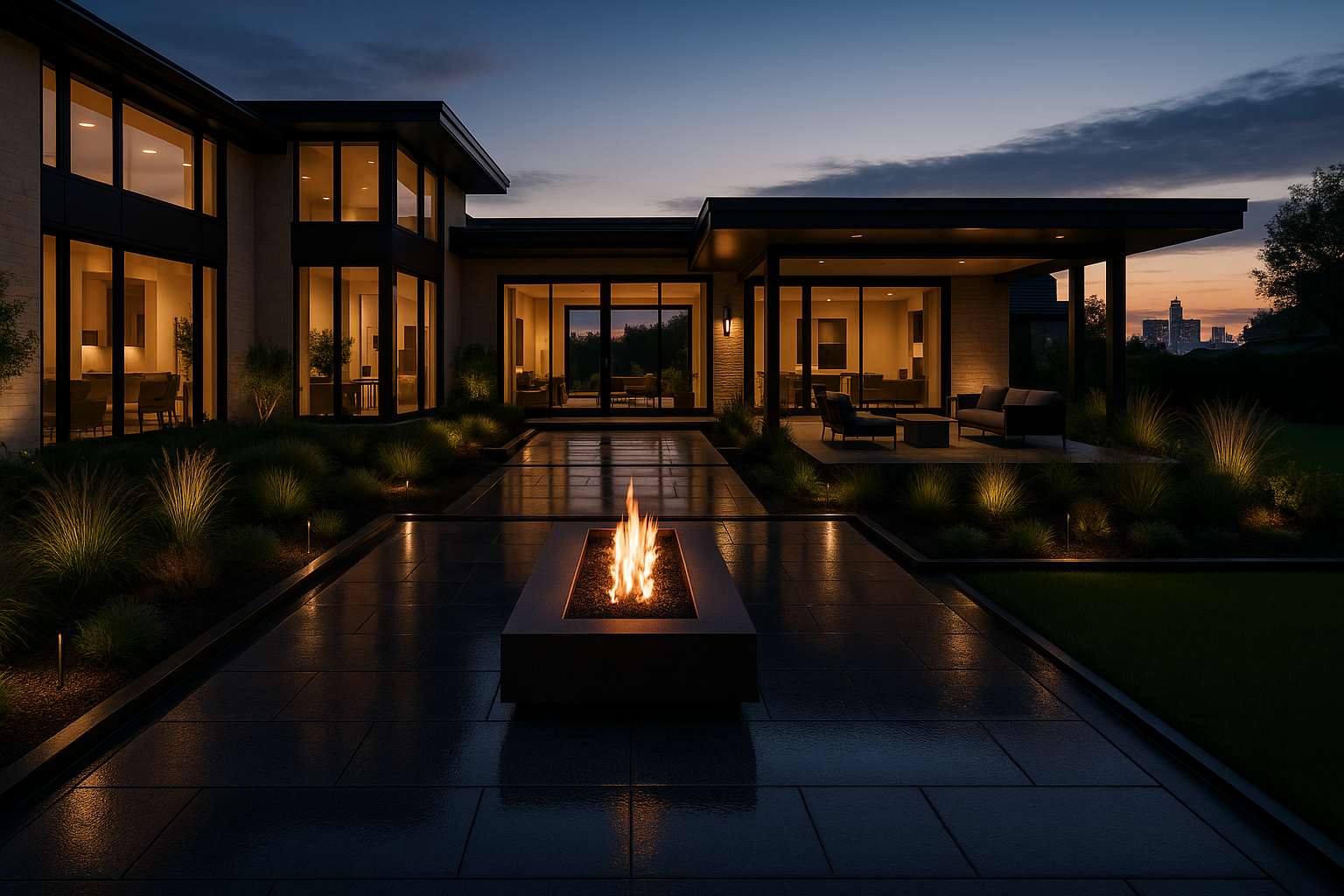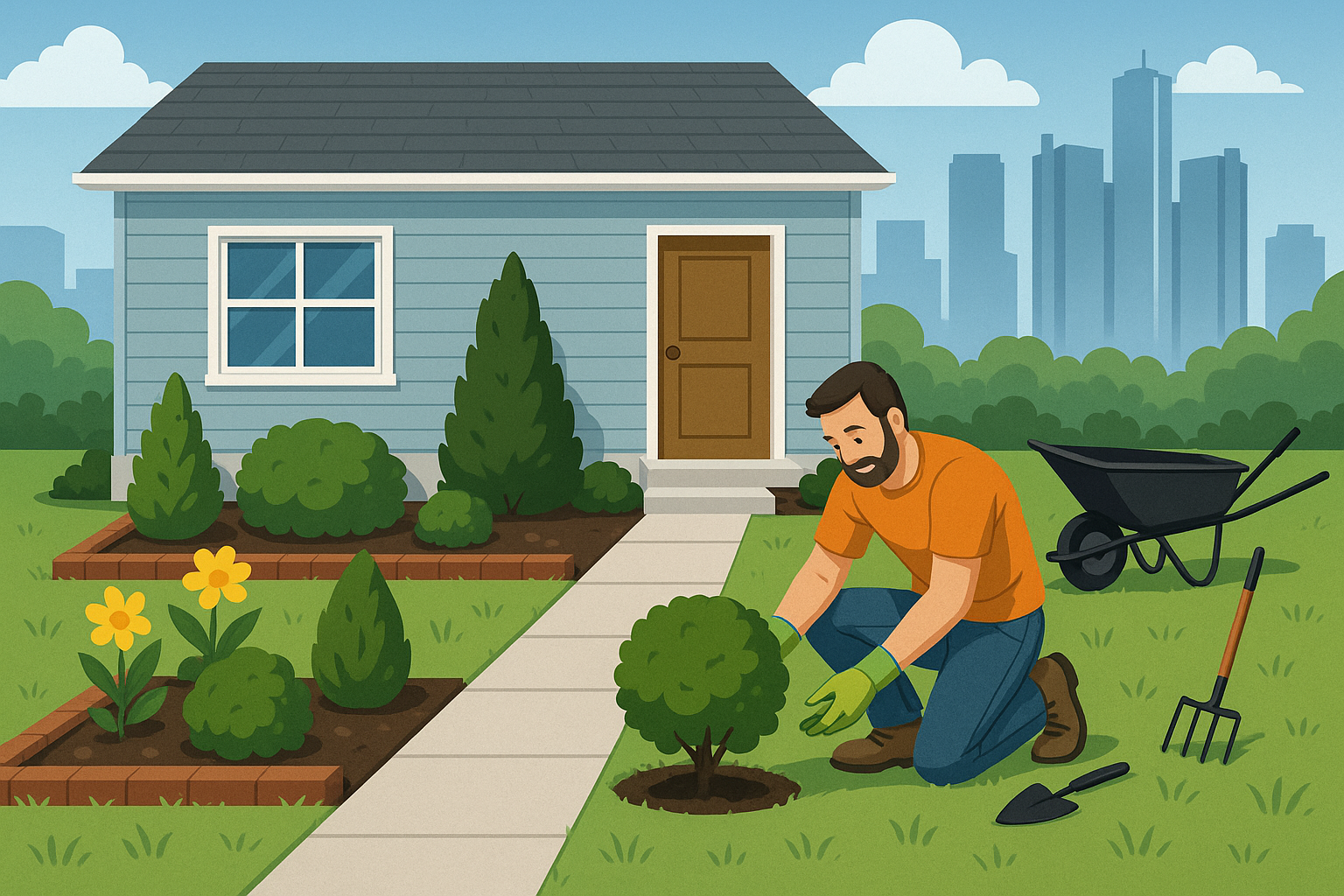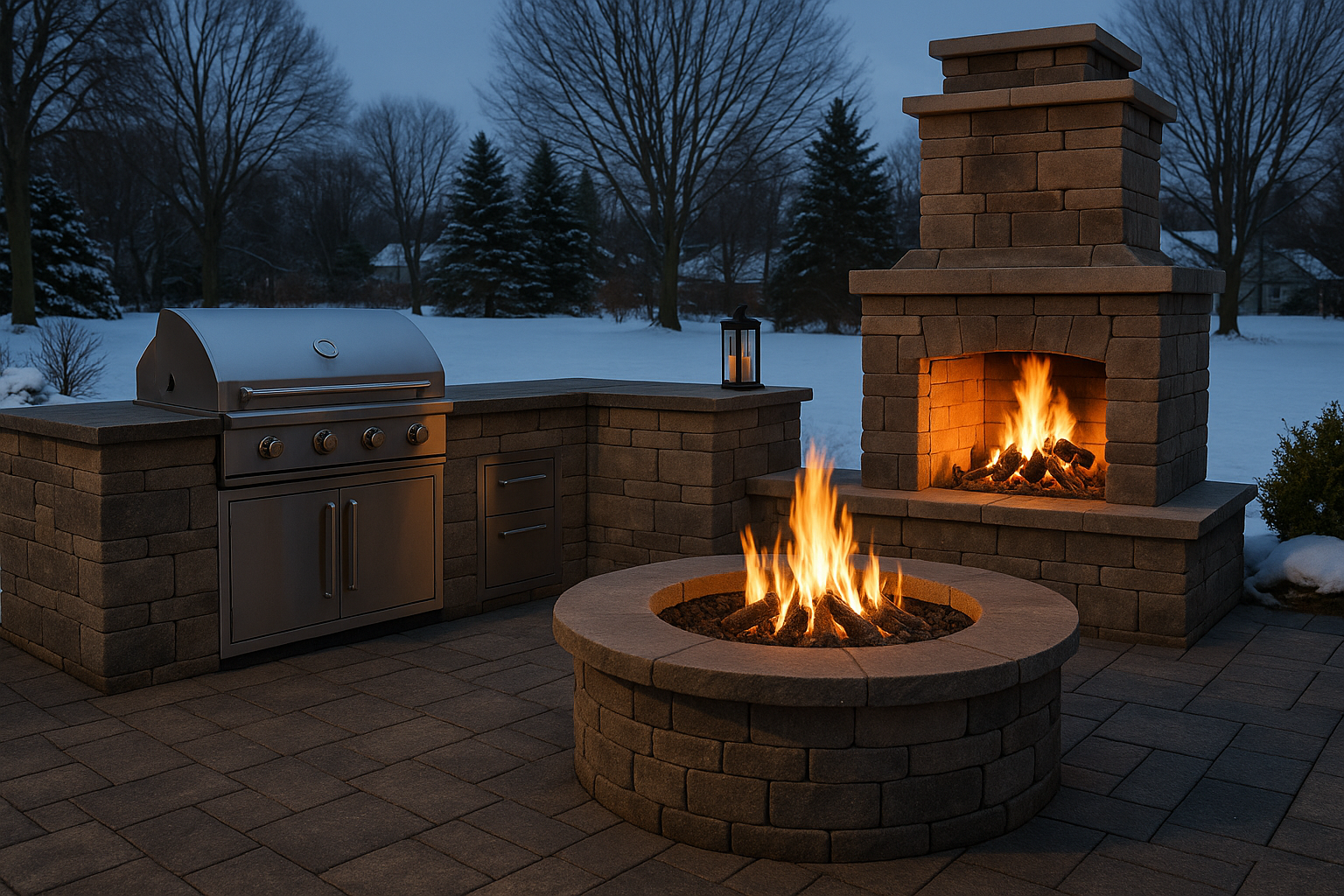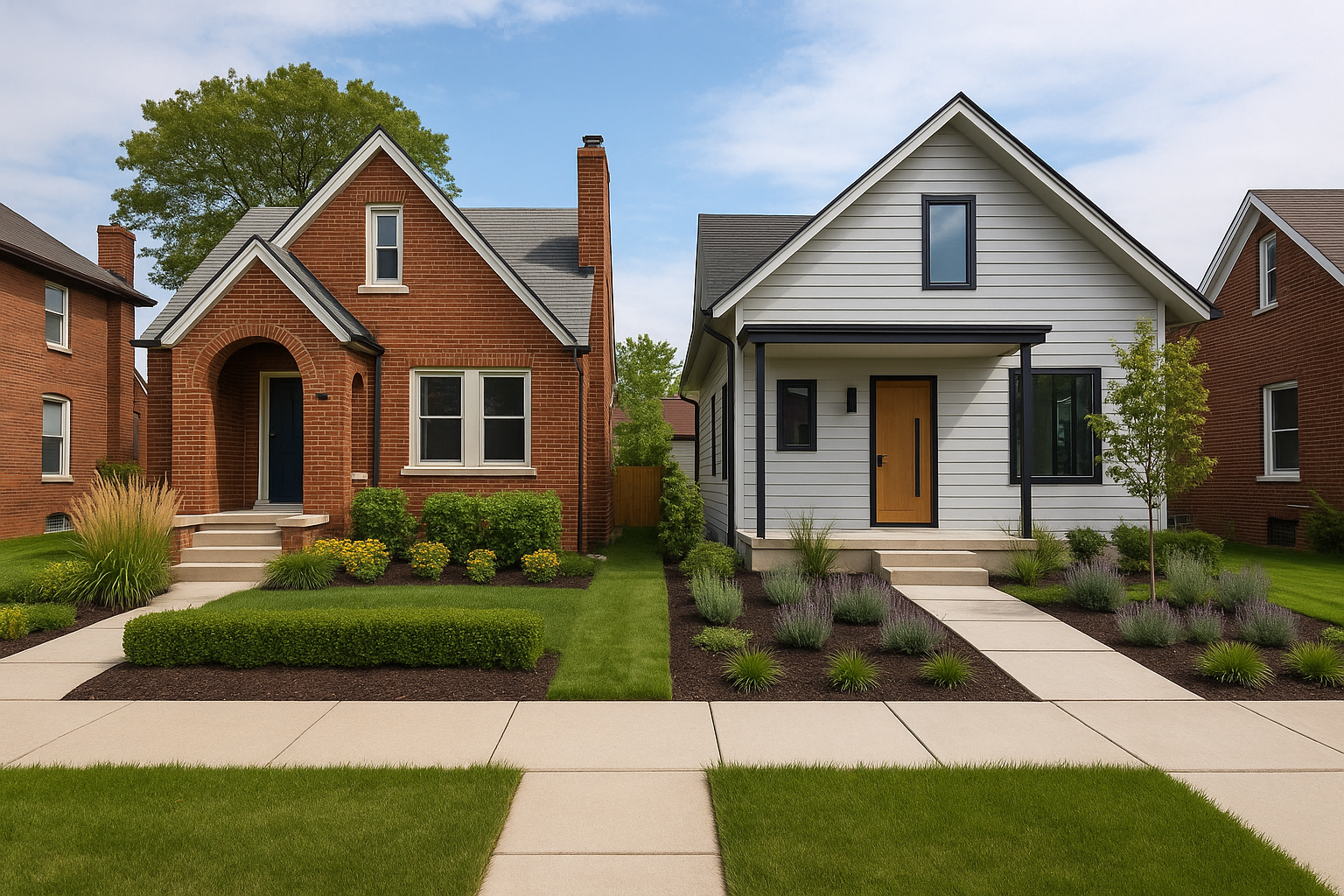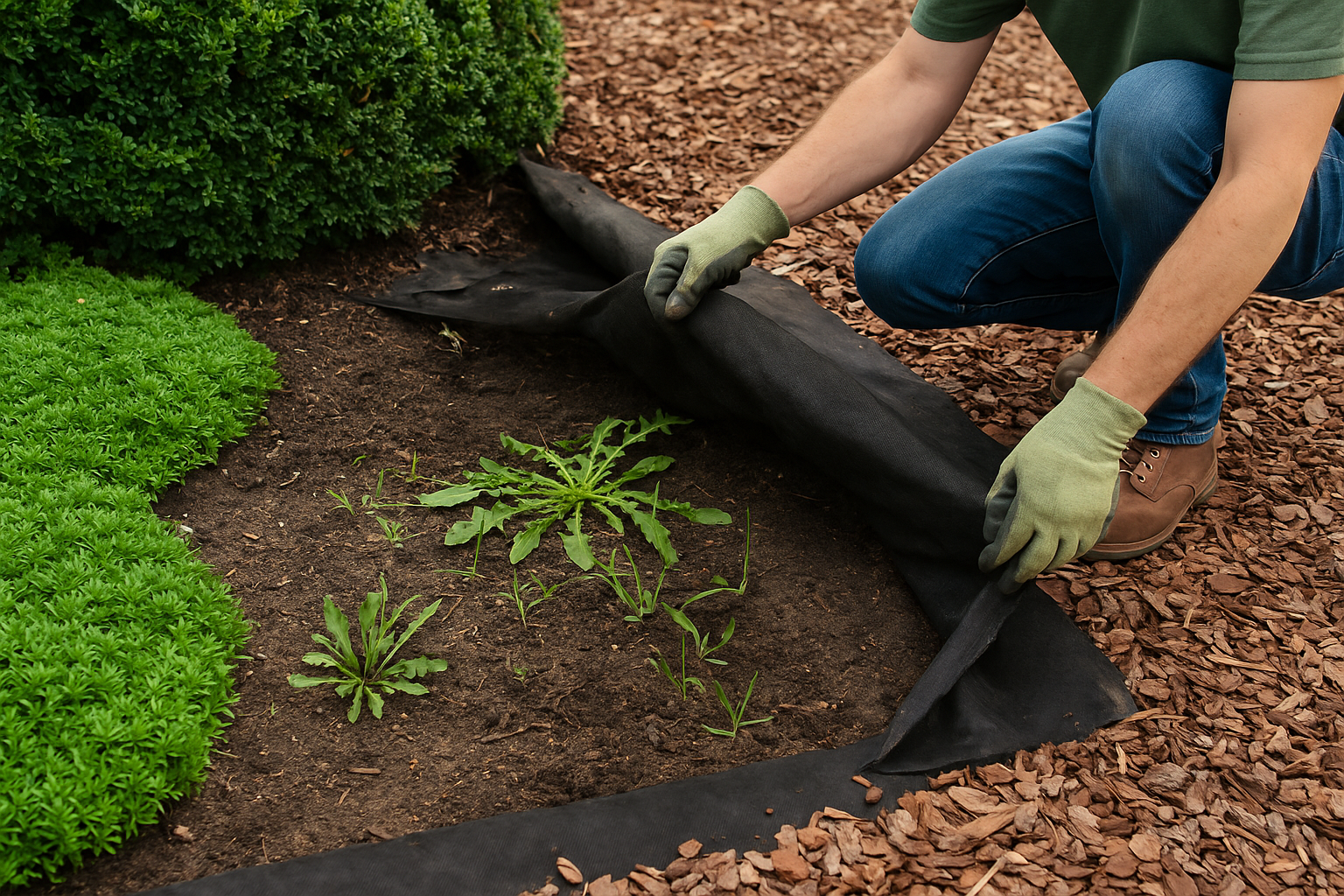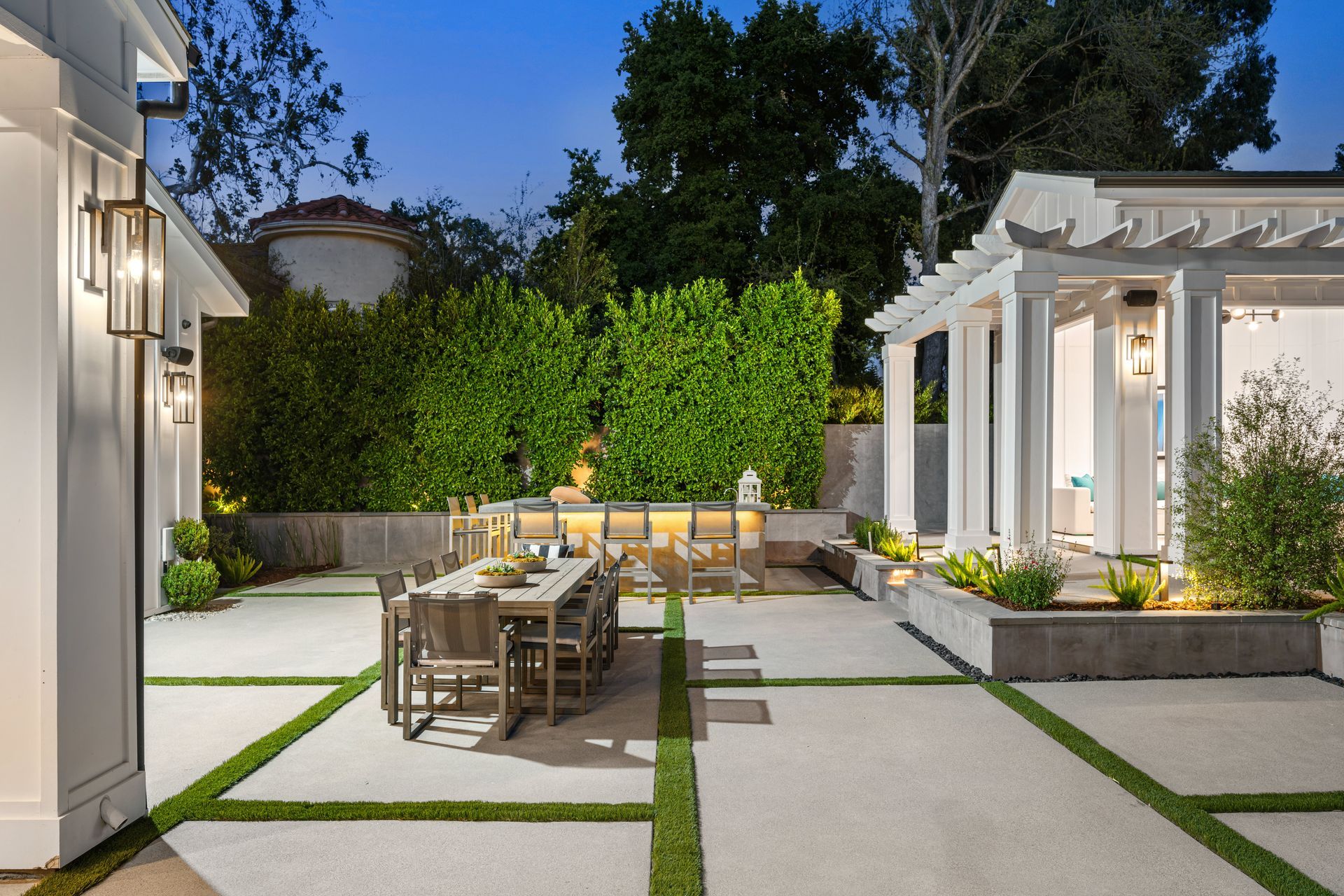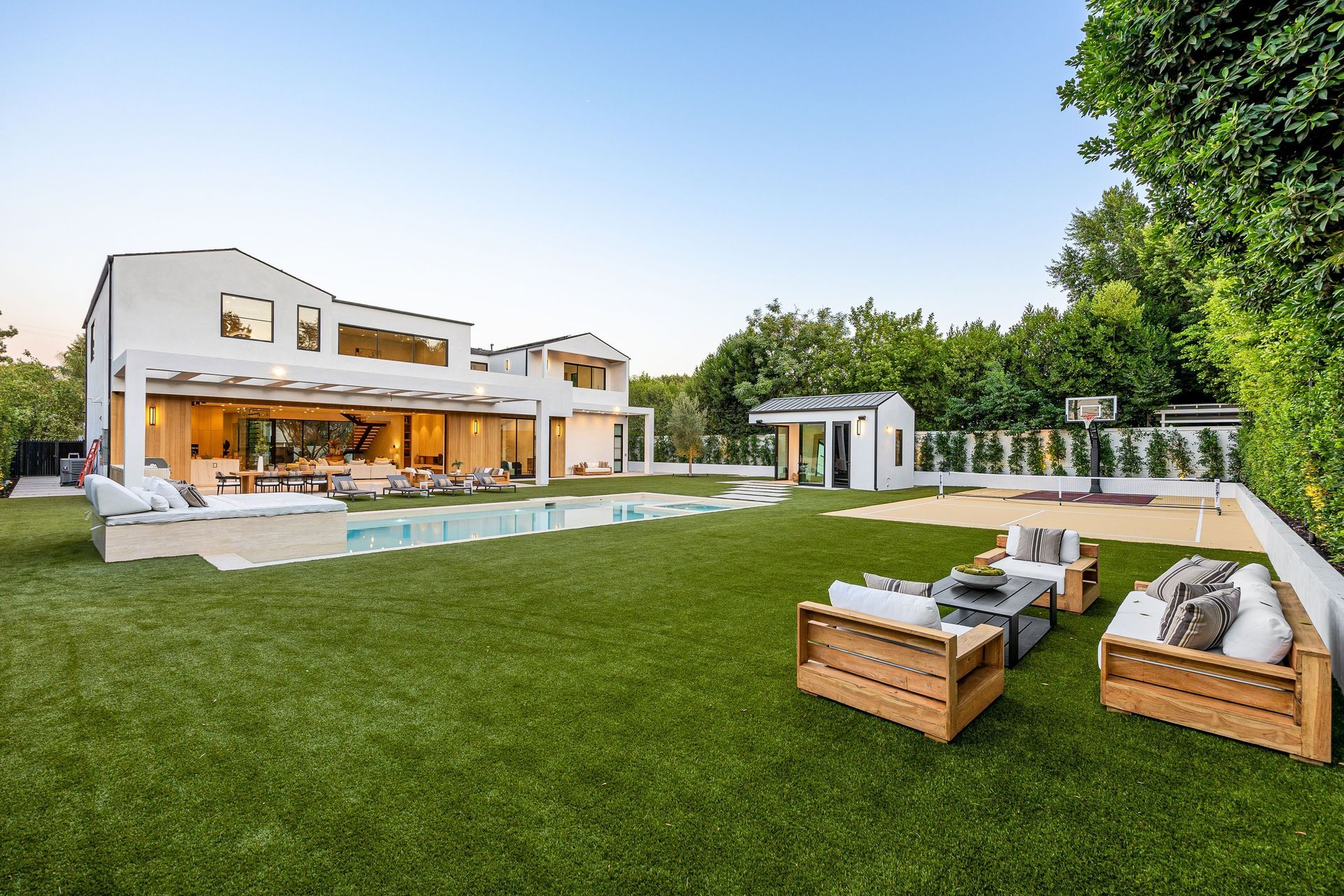The Top 5 DIY Paver Patio Mistakes Detroit Homeowners Make (and How to Avoid Them)
The Top 5 DIY Paver Patio Mistakes Detroit Homeowners Make (and How to Avoid Them)
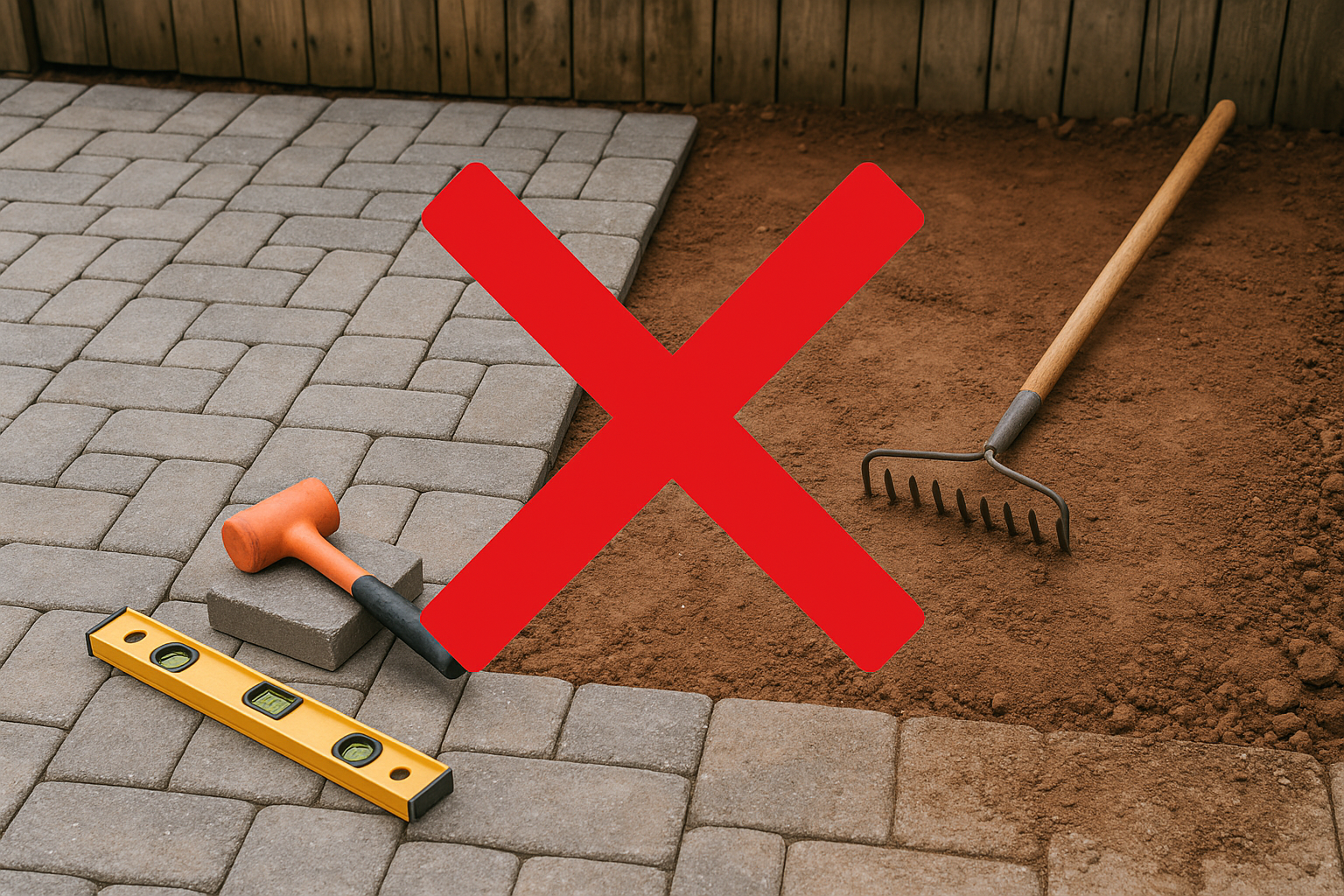
Dreaming about a weekend build that turns into a gorgeous outdoor room? In Metro Detroit that dream can buckle fast if the base is thin, drainage is ignored, or edges drift after a freeze–thaw. This guide breaks down the five most expensive mistakes we see in patio construction, then shows you how to do it the way a pro would—so your investment looks sharp in July and still sits true in February.
Detroit-first: climate and soil realities that drive design
We build in a four-season city with real winters, a dramatic thaw, and spring rains that test every joint and base layer. Many neighborhoods sit on clay-rich subsoils that hold water, compact easily, and heave when frozen. Add de-icing salt overspray near walks and drives, and you’ve got a stress test that punishes shortcuts.
What this means for your patio:
- Base depth must match load and soil strength (clay ≠ sand).
- Drainage and slope are non-negotiable.
- Edge restraint is a system, not an afterthought.
- Materials must be rated for freeze–thaw and properly installed.
Luxury hardscape isn’t the stone you see—it’s the engineering you don’t.
Mistake #1: Shallow excavation and underbuilt base
The problem: Digging “just enough” to set pavers on a dusting of stone or sand. On clay, that base pumps, shifts, and telegraphs every flaw to the surface after the first winter.
Fix it like a pro:
- Excavate to sound subgrade. For lounge patios on clay, plan a compacted base depth that commonly ranges 6–8"+; for entertainment patios with kitchen/islands, deeper.
- Separate clay subgrade with a high-quality geotextile to keep fines out of the aggregate.
- Place open-graded or well-graded base aggregate in lifts (2–3") and compact each lift to refusal with a plate compactor (or reversible compactor on deeper bases).
- Use a true screeded bedding layer (concrete sand or manufacturer-approved setting bed) at uniform thickness—never “fix” a wavy base with extra bedding material.
This is where professional hardscape installation pays for itself: correct depth, correct compaction, correct sequence. If you want a team to execute the structural layers while you handle plantings and finishing touches, start with our Hardscape Design & Installation page.
Mistake #2: Missing or weak edge restraint
The problem: No-dig plastic edging staked into uncompacted soils, or no edging at all. Detroit’s freeze–thaw and turning forces at the perimeter cause “paver creep” and wavy lines.
Fix it like a pro:
- Specify continuous, compatible edge restraint that matches paver thickness and application.
- Bed restraints on compacted base, pin them per spec, and ensure finished height captures the paver shoulder.
- At drive aprons and step transitions, step up to a concrete curb or cast-in restraint band that can resist lateral loads.
- Lock borders before you lay fields on patterns like herringbone that push outward.
These details apply across hardscape design—walks, terraces, steps, courts—and they’re the difference between crisp lines and continual touch-ups.
Mistake #3: Ignoring drainage and slope on clay soils
The problem: A dead-flat patio may look nice on paper, but water will pond, wick into joints, and saturate clay subgrades. Once winter hits, the patio lifts, sinks, or tilts.
Fix it like a pro:
- Pitch finished surfaces 1–2% away from the house and toward designed drains or turf.
- Keep downspouts off the patio; route them under or around the hardscape to day-light in a safe area.
- In persistent wet pockets, add under-patio drains tied to a legal outlet—especially in heavy clay.
- Choose jointing systems rated for our climate and follow cure instructions so stormwater doesn’t wash out fresh joints.
If you’re also reshaping beds and lawn grades, coordinate the soil and plant work through our Residential Landscaping team so the entire site drains as one system.
Mistake #4: Using the wrong pattern, module, or materials for the load
The problem: Large, thin slabs on weak base; “pretty” patterns that don’t resist shear; non-rated units that spall or shift.
Fix it like a pro:
- For vehicular areas, use interlocking patterns (e.g., herringbone) and units rated for traffic.
- Match thickness and module to the application; respect manufacturer tolerances.
- Choose freeze–thaw tested pavers and accessories, and avoid mixing systems that move differently.
- In high-use or high-load zones (grills, spas), consider reinforced edges and beefed-up base sections.
These principles carry over to brick paver patios, paver driveways, and even elegant stone walkways that flank your terrace.
Mistake #5: Treating the patio like an island (no integration)
The problem: A patio dropped into the yard without tying into steps, lighting, plantings, or circulation. It works the first month, then feels awkward.
Fix it like a pro:
- Start with a site plan: doors, views, grill path, trash path, winter snow storage, and hose bibs.
- Align modules with window/door geometry; tune heights for one-riser transitions where needed.
- Build a functional edge: seat walls that double as snow shelves; stair widths that match traffic.
- Layer lighting so you can see steps and surfaces on winter evenings.
That’s the core of smart deck and patio design—and where a pro concept saves you thousands in rework.
Detroit-ready build steps
- Assess and mark utilities. Call before you dig; mark downspouts and irrigation.
- Excavate to competent subgrade. Remove organics; over-excavate weak pockets.
- Stabilize subgrade. Proof-roll; add geotextile over clay; correct soft spots.
- Place base aggregate in lifts. Compact each lift; test for density/deflection if possible.
- Shape drainage. Establish slope and any under-patio drain paths.
- Screed the bedding layer. Uniform thickness; never use to correct base errors.
- Lay pavers. Start from straight control lines; keep joints tight; cut clean.
- Install edge restraint. Pin or set per spec; ensure it fully captures the field.
- Compact and joint. Vibrate with a plate compactor; sweep in jointing; mist/cure per product.
- Punch list and seal (if specified). Address lippage; clean; apply sealer to cured surfaces where appropriate.
Pattern & border ideas that look custom (without making mistakes)
- Use a quiet field with a contrasting border ½–1 tone darker to frame space.
- Add a single ribbon inlay to echo a lintel or mullion line; avoid multiple busy stripes.
- For custom patios beside water features, choose textures that remain slip-resistant in shoulder seasons.
- Integrate low cap lights in seat walls so winter darkness doesn’t erase edges.
These same strategies translate beautifully to poolside landscaping, where safety, texture, and glare control matter.
Q&A
How deep should my patio base be in Detroit clay?
Depth varies by load and soil strength. On clay, 6–8"+ of compacted aggregate is a common starting point for lounge patios; more for kitchens/spas and anywhere with vehicle access.
Do I need fabric under my paver base?
Use geotextile as a separator over clay subgrade (engineering purpose), not as a “weed barrier” in planting beds.
What slope should I use?
Typically 1–2% away from structures toward a designed outlet—enough to move water without feeling tilted.
Polymeric sand or regular joint sand?
Choose premium jointing that’s rated for freeze–thaw and follow cure times; many Detroit callbacks trace to joints that were rushed before a storm.
Compact checklist
- Confirm base depths by area (lounge vs. kitchen vs. grill run).
- Separate clay with geotextile; compact base in 2–3" lifts.
- Set a 1–2% slope; route downspouts off-patio.
- Lock borders and edges before laying the main field.
- Choose rated units/patterns for the load (vehicular vs. pedestrian).
- Program lighting for winter evenings; protect fixtures from plows.
- Photograph sublayers for your records before you close the work.
Mini case: Birmingham, MI—resetting an uneven patio the right way
A Birmingham homeowner called about a 3-year-old patio that had settled and tilted toward the house. Inspection showed a thin base over clay, no geotextile, and plastic edging that had lifted after the first winter.
What we did:
- Removed the surface and bedding; excavated to competent subgrade.
- Installed geotextile, then placed 8" of well-graded base in compacted lifts.
- Added a discreet under-patio drain tied to a legal outlet; re-pitched the surface at 1.5%.
- Swapped to an interlocking herringbone field with a single ribbon inlay; upgraded to cast-in curbs at the apron.
- Jointed with a freeze–thaw rated product and allowed full cure before rain.
Outcome: The patio is now level, drains correctly, and ties smoothly into new stone walkways and planted beds. The owner reports clear joints and zero edge movement after two winters.
How this connects to driveways, walks, and entries
The same physics apply to paver driveways—only the stakes are higher. Vehicle loads demand deeper base, stronger edges, and interlocking patterns that resist shear. Front approaches benefit from reinforced borders and curb-tight restraint. Side paths and entries deserve the same drainage discipline so they don’t ice up or drift out of line.
When you’re planning a full property refresh—patio, steps, entries, and planting—browse our blog hub for ideas, then align it under one integrated plan via Hardscape Design & Installation so the details match end-to-end.
Materials & jointing: quick bullets
- Choose pavers and accessories rated for freeze–thaw (manufacturer data matters).
- Respect module thickness and edge tolerances; don’t blend incompatible systems.
- Keep cuts tight and polished; sloppy cuts pull the eye.
- Follow jointing manufacturer instructions for temperature and moisture—rushing cure is a classic Detroit mistake.
Mini glossary
Bedding layer — The thin, uniformly screeded layer that supports pavers atop the base; not a fix for a wavy base.
Compaction — Densifying soil or aggregate with vibration to reach target stability/density.
Deflection — Movement under load; too much hints at a weak base or poor compaction.
Geotextile — A fabric separator that keeps clay fines out of the base and improves stability.
Herringbone — An interlocking pattern that resists vehicular shear, excellent for driveways/aprons.
Lippage — A height difference between adjacent pavers; minimized by a flat base and careful setting.
Polymeric jointing — Sand with binders that hardens to resist washout and weeds when properly cured.
Soldier course — A border of pavers set perpendicular to the field to frame edges and add strength.
DIY vs. pro: deciding where to draw the line
If your layout is simple and the soil behaves, DIY can deliver a solid lounge patio. If your site has clay, slopes, downspouts, or plans for built-ins, the savings vanish quickly when the base fails. A professional crew brings compaction equipment, laser grading, and the experience to tie stone and brick masonry details—steps, walls, edging—into one cohesive system.
For Detroit homeowners who want a patio that reads as architecture, explore our Residential Landscaping to see how planting, soil prep, and lighting wrap around the hardscape so the space lives right from day one.
Closing Statement
Detroit will expose shortcuts. The patios that age beautifully here are engineered from the ground up—correct base depth, real drainage, strong edges, and materials that suit the load. Get those details right, and your terrace won’t just look good at the final sweep; it will feel solid underfoot for years, through ice, thaw, and summer gatherings.

